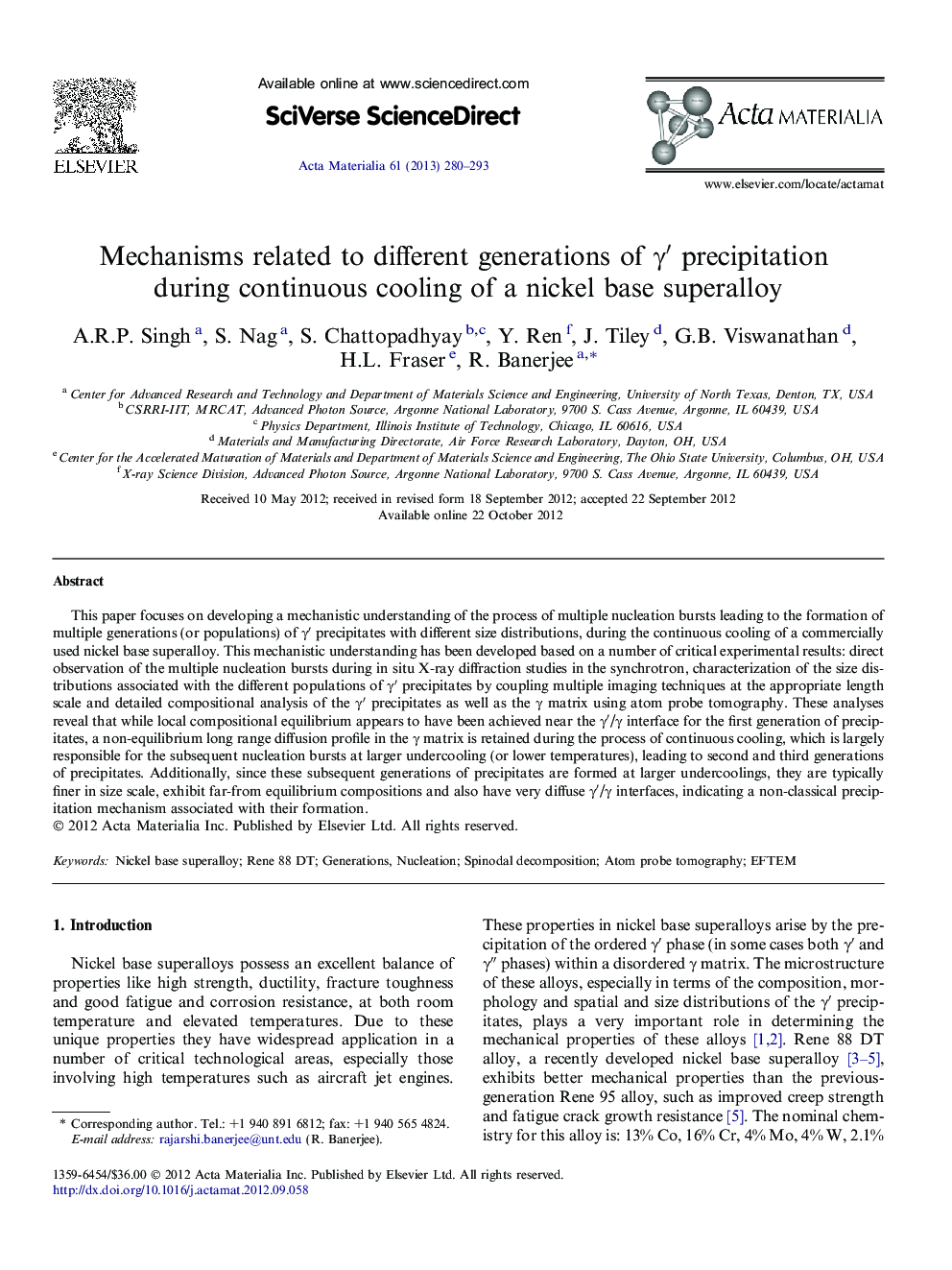| Article ID | Journal | Published Year | Pages | File Type |
|---|---|---|---|---|
| 10620327 | Acta Materialia | 2013 | 14 Pages |
Abstract
This paper focuses on developing a mechanistic understanding of the process of multiple nucleation bursts leading to the formation of multiple generations (or populations) of γⲠprecipitates with different size distributions, during the continuous cooling of a commercially used nickel base superalloy. This mechanistic understanding has been developed based on a number of critical experimental results: direct observation of the multiple nucleation bursts during in situ X-ray diffraction studies in the synchrotron, characterization of the size distributions associated with the different populations of γⲠprecipitates by coupling multiple imaging techniques at the appropriate length scale and detailed compositional analysis of the γⲠprecipitates as well as the γ matrix using atom probe tomography. These analyses reveal that while local compositional equilibrium appears to have been achieved near the γâ²/γ interface for the first generation of precipitates, a non-equilibrium long range diffusion profile in the γ matrix is retained during the process of continuous cooling, which is largely responsible for the subsequent nucleation bursts at larger undercooling (or lower temperatures), leading to second and third generations of precipitates. Additionally, since these subsequent generations of precipitates are formed at larger undercoolings, they are typically finer in size scale, exhibit far-from equilibrium compositions and also have very diffuse γâ²/γ interfaces, indicating a non-classical precipitation mechanism associated with their formation.
Keywords
Related Topics
Physical Sciences and Engineering
Materials Science
Ceramics and Composites
Authors
A.R.P. Singh, S. Nag, S. Chattopadhyay, Y. Ren, J. Tiley, G.B. Viswanathan, H.L. Fraser, R. Banerjee,
